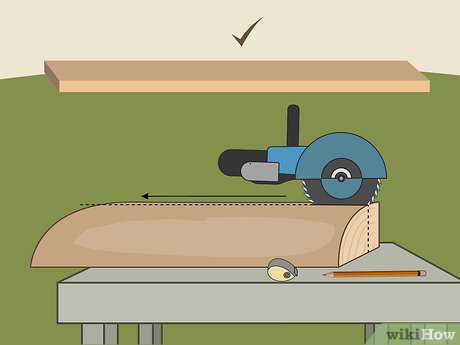How to Quarter Saw: 13 Steps

Quarter sawing is a unique lumber-cutting technique that provides stronger, more stable, and visually appealing wood. This method of cutting reduces the chances of warp and twist in the wood, and the process also reveals more attractive grain patterns. Follow these 13 steps to quarter saw your lumber effectively:
1. Choose an appropriate log: Select logs with straight grain, minimal knots, and uniform diameter for the best results.
2. Measure the log’s dimensions: Measure both the length and diameter of the log for accurate calculations.
3. Mark the log’s center: Use chalk or a marking tool to mark the exact center point across the width of both ends of the log.
4. Draw lines for quartering: From the center point marked in step 3, draw straight lines outward along both ends of the log creating 90-degree angles so that it is divided into four equal quarters (i.e., like a pie).
5. Position your sawmill: Position your sawmill or portable bandsaw so that it lines up with one of the drawn lines on each end of the log.
6. Make your first cut: Following one of your drawn lines as a guide, make a cut all the way through to quarter your log into two separate (but still attached) halves.
7. Rotate your semi-cut log: Rotate each half-log by 90-degrees so that they’re standing vertically, in line with your next cut.
8. Finish quartering: Using your initial drawn lines as guides, cut all four quarters to finalize the process.
9. Flatten one face: With each quarter isolated, flatten one face to provide an even surface for future cuts.
10. Determine desired thickness: Decide how thick you want your boards to be (e.g., 1″, 1-1/2″, or 2″) as this will dictate additional cuts.
11. Make additional cuts: Using your sawmill, make additional cuts according to your desired thickness, maintaining a 90-degree angle with the grain orientation until each quarter is turned into several boards.
12. Stack and dry the lumber: Stack your newly-cut boards horizontally, using wooden stickers in between each layer to allow for proper airflow and even drying.
13. Milling: Once fully dried, mill the lumber to remove any remaining unevenness and achieve a smooth finish.
By following these 13 steps carefully, you can successfully quarter saw logs and obtain high-quality wood for your projects. Remember to practice safety precautions while cutting and handling wood to prevent accidents. Happy woodworking!






